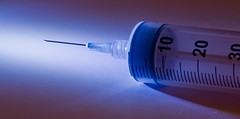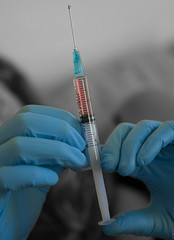There is a distinct intersection between two topics we focus on: incarcerated women and incarcerated juveniles. Each group has it’s own distinct issues, but young women in prison suffer the burden of both.
One troubling issue recently spotlighted by NPR is the state of health care for girls within the juvenile justice system. You see, the system is geared towards boys. Due to the simple differences in biology alone, this leaves vital needs unaddressed.
As the NPR piece states:
Girls in detention are “one of the most vulnerable and unfortunately invisible populations in the country,” says Catherine Pierce, a senior adviser at the federal government’s Office of Juvenile Justice and Delinquency Prevention.
Up to 90 percent of these girls have experienced physical, sexual or emotional abuse, Pierce says.
Their health statistics are particularly grim: 41 percent have signs of vaginal injury consistent with sexual assault; up to a third have been or are currently pregnant; 8 percent have had positive skin tests for tuberculosis; and 30 percent need glasses but don’t have them, according to research from the National Girls Health and Justice Institute.
Do we really need to discuss why it is important to get proper treatment for health issues related to sexual assault? Or pregnancy? How about this additional finding that puts another vital piece of information on the table (also from the NPR report):
[Psychologist Leslie] Acoca argues it’s worth it to make the time. Her research has yielded a surprising finding: Poor physical health seems to increase girls’ risk of recidivism. In other words, girls who have health problems are more likely to reoffend and end up back in the criminal justice system.
This is not only a matter of health; it is a matter of reducing repeat offenses. I would say that should be enough to prioritize it for anyone.
The NPR piece does offer one potential solution: a new screening questionaire. By taking detailed info about health problems specific to women, care can be improved drastically. In addition, incoming inmates who might not be forthcoming in a not-so-public verbal interview have a higher chance of reporting health issues on a printed questionaire.
Those working in the system call it untenable due to the lack of staffing. In response I would question how many of those few staff hours are dedicated to dealing with the fallout from unreported problems.
Related articles
- Crossover Youth (humaneexposures.com)
- State must address needs of juveniles (mysanantonio.com)
- The Shocking Details of a Mississippi School-to-Prison Pipeline (colorlines.com)
- County-by-county map of juvvie justice issues new from CJCJ (californiaschildren.typepad.com)
- In Juvenile Detention, Girls Find Health System Geared To Boys (wnyc.org)
- How Juvenile Detention Centers Are Failing To Address Teenage Girls’ Health Care Issues (thinkprogress.org)












